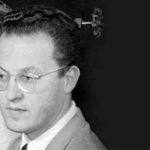This Biography is about one of the best Chemist Donald J. Cram including his Height, weight,Age & Other Detail…
| Biography Of Donald J. Cram | |
| Real Name | Donald J. Cram |
| Profession | Organic Chemists, Chemists |
| Nick Name | Donald James Cram |
| Famous as | Chemist |
| Nationality | American |
| Personal life of Donald J. Cram | |
| Born on | 22 April 1919 |
| Birthday | 22nd April |
| Died At Age | 82 |
| Sun Sign | Taurus |
| Born in | Chester, Vermont |
| Died on | 17 June 2001 |
| Cause of Death | Cancer |
| Family Background of Donald J. Cram | |
| Father | William Cram |
| Mother | Joanna Cram |
| Spouses/Partners | Jean Turner, Dr. Jane Maxwell |
| Awards | Nobel Prize in Chemistry (1987) Glenn T. Seaborg Medal (1989) National Medal of Science (1993) Guggenheim fellowship (1955) |
| Personal Fact of Donald J. Cram | |
|
Donald James Cram was an eminent American chemist who, along with Charles J. Pedersen and Jean-Marie Lehn, won the prestigious Nobel Prize for Chemistry in 1987 for their development and use of molecules with structure-specific interactions of high selectivity. The trio was the originator of the field of host-guest chemistry. Cram received his B.S. degree in Chemistry from the Rollins College in Florida followed by a M.S. degree in Organic Chemistry from the University of Nebraska. In 1947, he received his Ph.D degree from Harvard University and after spending three months as a postdoctoral scholar at Massachusetts Institute of Technology, he joined the faculty of the University of California at Los Angeles to become a full Professor by 1956. For over forty years, he taught more than 12,000 undergraduates, supervised nearly 120 doctoral and 100 postdoctoral students, and published more than 400 papers and eight books. Alongside his distinguished academic career, he remained committed to chemical research till the very end. He invented the Cram’s Rule which provided a methodology for calculating the result of nucleophilic attack of carbonyl compounds. He also expanded upon Pedersen’s innovative synthesis of crown ethers and built a range of differently shaped molecules that could attach selective atoms to themselves owing to their corresponding three-dimensional structure. |
|




